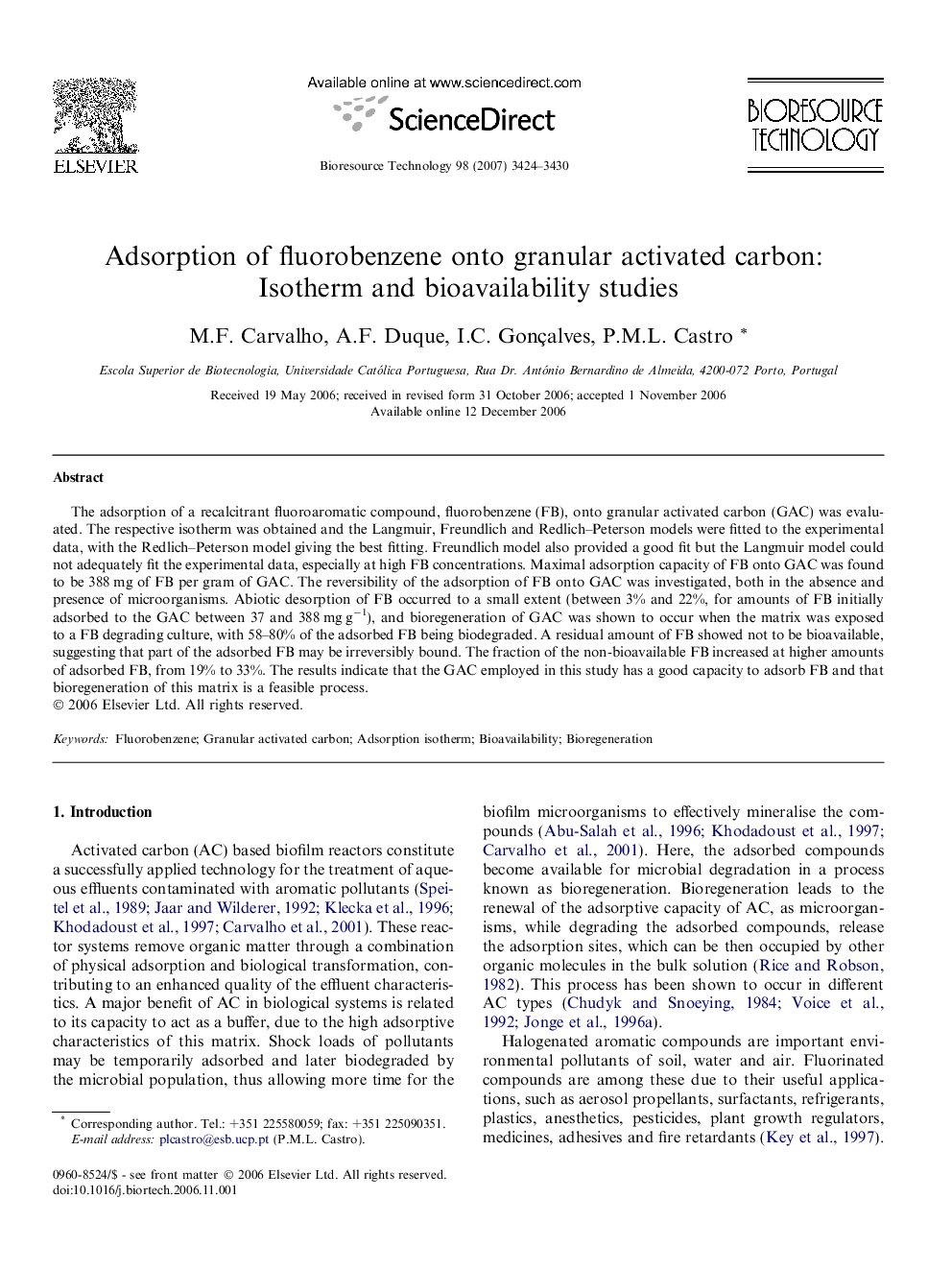| Article ID | Journal | Published Year | Pages | File Type |
|---|---|---|---|---|
| 686190 | Bioresource Technology | 2007 | 7 Pages |
Abstract
The adsorption of a recalcitrant fluoroaromatic compound, fluorobenzene (FB), onto granular activated carbon (GAC) was evaluated. The respective isotherm was obtained and the Langmuir, Freundlich and Redlich-Peterson models were fitted to the experimental data, with the Redlich-Peterson model giving the best fitting. Freundlich model also provided a good fit but the Langmuir model could not adequately fit the experimental data, especially at high FB concentrations. Maximal adsorption capacity of FB onto GAC was found to be 388 mg of FB per gram of GAC. The reversibility of the adsorption of FB onto GAC was investigated, both in the absence and presence of microorganisms. Abiotic desorption of FB occurred to a small extent (between 3% and 22%, for amounts of FB initially adsorbed to the GAC between 37 and 388 mg gâ1), and bioregeneration of GAC was shown to occur when the matrix was exposed to a FB degrading culture, with 58-80% of the adsorbed FB being biodegraded. A residual amount of FB showed not to be bioavailable, suggesting that part of the adsorbed FB may be irreversibly bound. The fraction of the non-bioavailable FB increased at higher amounts of adsorbed FB, from 19% to 33%. The results indicate that the GAC employed in this study has a good capacity to adsorb FB and that bioregeneration of this matrix is a feasible process.
Related Topics
Physical Sciences and Engineering
Chemical Engineering
Process Chemistry and Technology
Authors
M.F. Carvalho, A.F. Duque, I.C. Gonçalves, P.M.L. Castro,
